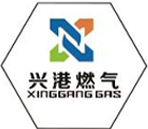
Sep . 30, 2024 05:26
Back to list
Design and Safety Considerations for Pressure Vessels in Gas Applications
Understanding Gas Pressure Vessels Design, Applications, and Safety
Gas pressure vessels play a critical role in various industrial applications, efficiently storing and managing gases under pressure. These containers maintain the integrity and safety of gases, ensuring that operations involving high-pressure environments can function smoothly and securely. This article delves into the design, applications, and safety considerations associated with gas pressure vessels.
Design and Construction
Gas pressure vessels are engineered to withstand high pressures. The materials used are typically high-strength steel or composite materials that can endure the internal forces exerted by the gas. The design must account for factors such as the type of gas stored, the temperature of operation, and external environmental conditions.
Pressure vessels are generally constructed following established standards, such as the ASME (American Society of Mechanical Engineers) Boiler and Pressure Vessel Code, which outlines the design, fabrication, and inspection requirements to ensure safety and reliability. Proper calculations for wall thickness, stress analysis, and storage volume are critical components in the design process. Common shapes include cylindrical, spherical, and conical, each chosen based on the specific characteristics and needs of the application.
Applications
Gas pressure vessels are ubiquitous in many sectors, including chemical processing, oil and gas, food and beverage industries, and energy production. They are utilized for storing gases like natural gas, oxygen, nitrogen, and carbon dioxide, often under varying pressure levels.
In the chemical industry, for example, pressure vessels are essential for the safe storage of reactive gases. In the oil and gas sector, they are used in methods such as enhanced oil recovery, where gases are injected into reservoirs to increase output. In medical applications, pressure vessels are vital for the storage and delivery of gases, such as oxygen for patients.
gas pressure vessel

Additionally, gas pressure vessels find applications in renewable energy sectors, particularly in the storage of gases produced from bioenergy facilities or during hydrogen production for fuel cells
. The ability to store various gases at high pressures enhances the efficiency and sustainability of energy systems.Safety Considerations
Given the potential hazards associated with gas pressure vessels, safety is a paramount concern. The design and operation of these vessels are governed by strict regulations and guidelines to prevent accidents and failures. Risk assessments should be conducted to identify potential hazards, and regular maintenance and inspections are crucial to ensure integrity over time.
Operators should be trained to understand the risks and proper handling techniques associated with high-pressure gases. Among the key safety features integrated into gas pressure vessels are pressure relief valves, rupture disks, and monitoring systems that can detect pressure irregularities or leaks.
Furthermore, the location of pressure vessels is often strategically chosen to minimize risk to personnel and the environment in case of a failure. Secondary containment systems may also be utilized to capture any leaks or spills.
Conclusion
Gas pressure vessels are vital components in many industrial processes, offering safe and efficient storage solutions for high-pressure gases. The importance of robust design, adherence to safety standards, and ongoing maintenance cannot be overstated. As industries continue to evolve, the innovation surrounding gas pressure vessels remains integral, enhancing both safety and operational efficiency across various applications. Understanding the complexities of gas pressure vessels ensures that they can be utilized effectively and responsibly in the modern industrial landscape.
Latest news
-
Safety Valve Spring-Loaded Design Overpressure ProtectionNewsJul.25,2025
-
Precision Voltage Regulator AC5 Accuracy Grade PerformanceNewsJul.25,2025
-
Natural Gas Pressure Regulating Skid Industrial Pipeline ApplicationsNewsJul.25,2025
-
Natural Gas Filter Stainless Steel Mesh Element DesignNewsJul.25,2025
-
Gas Pressure Regulator Valve Direct-Acting Spring-Loaded DesignNewsJul.25,2025
-
Decompression Equipment Multi-Stage Heat Exchange System DesignNewsJul.25,2025

